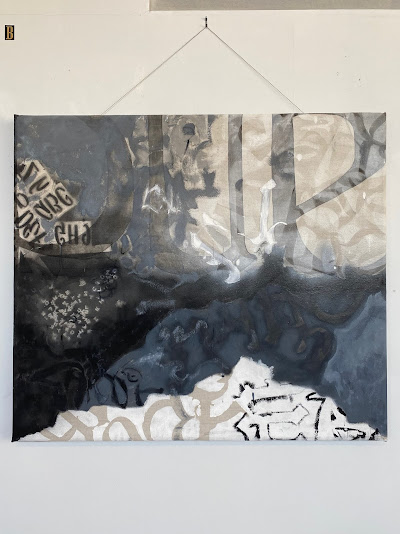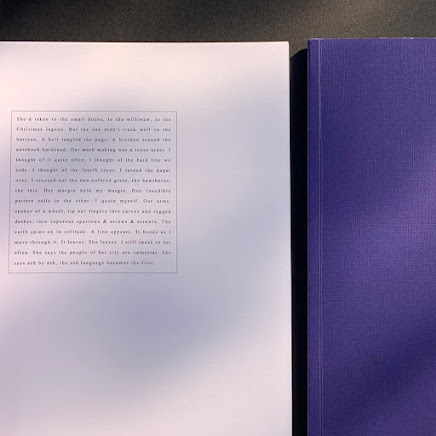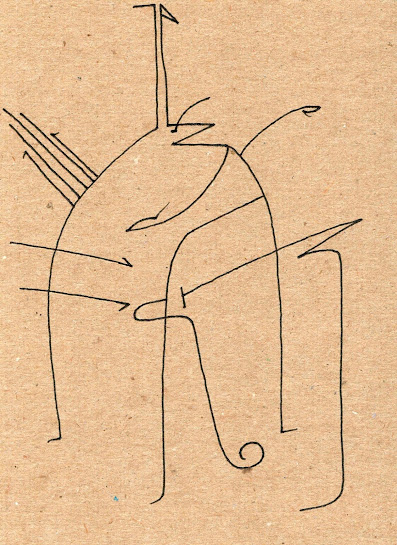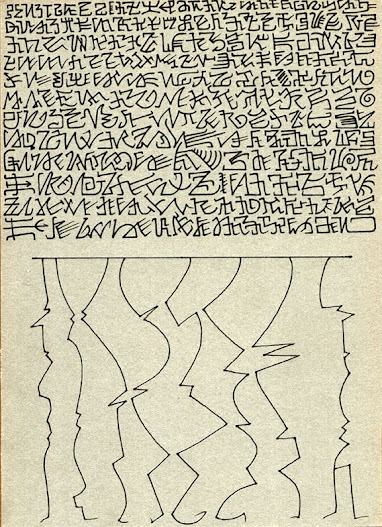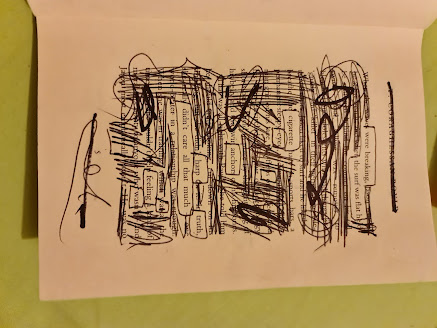This weblog explores asemic writing in relation to post-literate culture
Friday, December 31, 2021
Saturday, December 4, 2021
Saturday, November 27, 2021
Etudes On Solitude: Asemic Art by Jóhann Viljálmsson, a poem by Hlin Agnarsdóttir, and an essay by W. Sheldon Hurst
A little while back I received a great work of beautiful asemic writing by the extremely talented Icelandic artist Jóhann Viljálmsson. The name of the book is Etudes in Solitude. The book makes me think of illuminated manuscripts but are written completely in asemic calligraphy, like a contemporary version of The Book of Kells. The book was created during the Covid-19 viral outbreak. The name of the book is Etudes in Solitude. As the title suggests this book was cooked up during the quarantine from the virus which is still ravaging the globe, but it ends optimistically with healing and creation. Accompanying the art is a poem titled DEER HUNTING and deer hunting by Hlin Agnarsdóttir. It is a poem that gets at absence of something beautiful yet absent. The poem was created in Iceland in a country with no deer, an animal divine yet hunted. The book is introduced by W. Sheldon Hurst with insightful commentary about
the Covid epidemic and its relation to the solitary act of asemic writing and poetry.
You can get the book at the ArtReach Gallery, Portland Oregon for $20.00.
ArtReach Gallery at First Congressional UCC
1126 Southwest Park Avenue, Portland, OR, 97205
503-748-9419
uccportland.org
Or just contact W Sheldon Hurst on Facebook.
Wednesday, October 27, 2021
Tuesday, October 26, 2021
Wednesday, October 20, 2021
Tuesday, October 12, 2021
Lines of Thought: Fidgetglyphs by Geof Huth
The contents of the book run the handwriting gamut. The book makes it clear from the start that with years of practice Geof has refined his handwritten art to an individual exactitude. The asemic lines in the book have a playful urban coolness to their prompt graphical presence. I found in turning the pages that there is always something new even though the writing has a consistency; you can tell that one person wrote, conceived, and stylized this work, since it is an autograph of a lone creative soul.
The volume is generous, resembling the Codex Seraphinianus in its commitment. But unlike its predecessor, instead of images, the asemic text is refined down to pure asemia, putting the manuscript in the company of Mirtha Dermisache's graphisms, and the personal interior gestures of Henri Michaux. But unlike the rolling lines of Michaux and Dermisache, Huth's symbols entertain and enlighten with the singularity of their form. The lines of thought and fidgetglyph symbols do spring to life when the book is opened and invite the reader to dance with them in the reader's mind.
In the back of the book there are insights into Geof's creative process. He states: "My hand writes, and my hand draws, and it doesn't know the difference." He goes on to talk about the history of his childhood fascination with text, and how he learned to write with "intensive drills." It is an interesting backstory about how and when he began to create his fidgetglyphs, and tells the origin of ideas from the creative seed of nonverbal communication in his book.
In asemic writing there is a conversation with the reader's eyes. It is up to the author to engage the reader with something that is interesting and inviting but still doesn't let go of the creator's mysterious spirit. Geof knows his intentions and expresses them with sincerity in his work. The abstract calligraphy announces its arrival into history and Huth takes something as simple as a basic scrawl and transforms it into a magnum opus of textual design.
Lines of Thought: Fidgetglyphs, in total, is one of the most intensive texts of asemic writing ever produced. It is stark and modern yet warm and inviting, and is presented beautifully in a fine volume. Many of the art works in the book seem to be simultaneously crawling in and out of the sand, their message evaporating into time. There is a casual divinity, lost in the exchange of insinuation yet ephemerally grappled. The text escapes into subtle color and is archived between the covers, and best of all—it doesn't repeat.
Sunday, October 10, 2021
Thursday, September 16, 2021
Sunday, September 12, 2021
GAS: Poetry, Art and Music: GAS Featured Artist Interview with Michael Jacobso...
GAS: Poetry, Art and Music: GAS Featured Artist Interview with Michael Jacobso...: Michael Jacobson is a driving force in the Asemic art and writing community. As the founder of Post Asemic Press ( https://postasemicpress...
Monday, August 30, 2021
Sunday, August 8, 2021
Subscribe to:
Posts (Atom)








